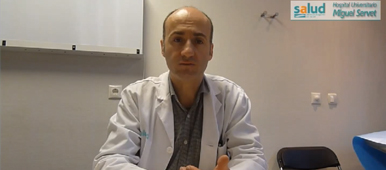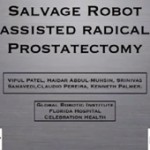Video: Genetic predisposition to early recurrence in clinically localized prostate cancer
Genetic predisposition to early recurrence in clinically localized prostate cancer
Ángel Borque, Jokin del Amo†, Luis M. Esteban*, Elisabet Ars§, Carlos Hernández**, Jacques Planas¶, Antonio Arruza††, Roberto Llarena‡, Joan Palou§, Felipe Herranz**, Carles X. Raventós¶, Diego Tejedor†, Marta Artieda†, Laureano Simon†, Antonio Martínez†, Elena Carceller, Miguel Suárez, Marta Allué¶, Gerardo Sanz* and Juan Morote¶
‘Miguel Servet’ University Hospital, *University of Zaragoza, Zaragoza, Spain, †Progenika Biopharma S.A., ‡University Hospital of Cruces, Bilbao, §Puigvert Foundation, ¶‘Vall d’Hebron’ University Hospital, Barcelona, **‘Gregorio Marañón’ University Hospital, Madrid, and ††Hospital of Txagorritxu, Vitoria, Spain
• To evaluate genetic susceptibility to early biochemical recurrence (EBCR) after radical prostatectomy (RP), as a prognostic factor for early systemic dissemination.
• To build a preoperative nomogram to predict EBCR combining genetic and clinicopathological factors.
PATIENTS AND METHODS
• We evaluated 670 patients from six University Hospitals who underwent RP for clinically localized prostate cancer (PCa), and were followed-up for at least 5 years or until biochemical recurrence.
• EBCR was defined as a level prostate-specific antigen >0.4 ng/mL within 1 year of RP; preoperative variables studied were: age, prostate-specific antigen, clinical stage, biopsy Gleason score, and the genotype of 83 PCa-related single nucleotide polymorphisms (SNPs).
• Univariate allele association tests and multivariate logistic regression were used to generate predictive models for EBCR, with clinicopathological factors and adding SNPs.
• We internally validated the models by bootstrapping and compared their accuracy using the area under the curve (AUC), net reclassification improvement, integrated discrimination improvement, calibration plots and Vickers’ decision curves.
RESULTS
• Four common SNPs at KLK3, KLK2, SULT1A1 and BGLAP genes were independently associated with EBCR.
• A significant increase in AUC was observed when SNPs were added to the model: AUC (95% confidence interval) 0.728 (0.674–0.784) vs 0.763 (0.708–0.817).
• Net reclassification improvement showed a significant increase in probability for events of 60.7% and a decrease for non-events of 63.5%.
• Integrated discrimination improvement and decision curves confirmed the superiority of the new model.
CONCLUSIONS
• Four SNPs associated with EBCR significantly improved the accuracy of clinicopathological factors.
• We present a nomogram for preoperative prediction of EBCR after RP.



